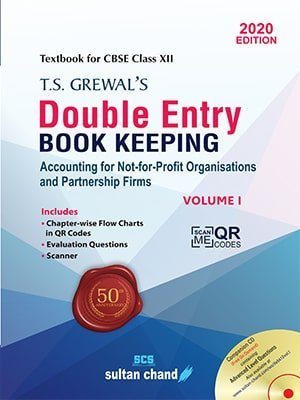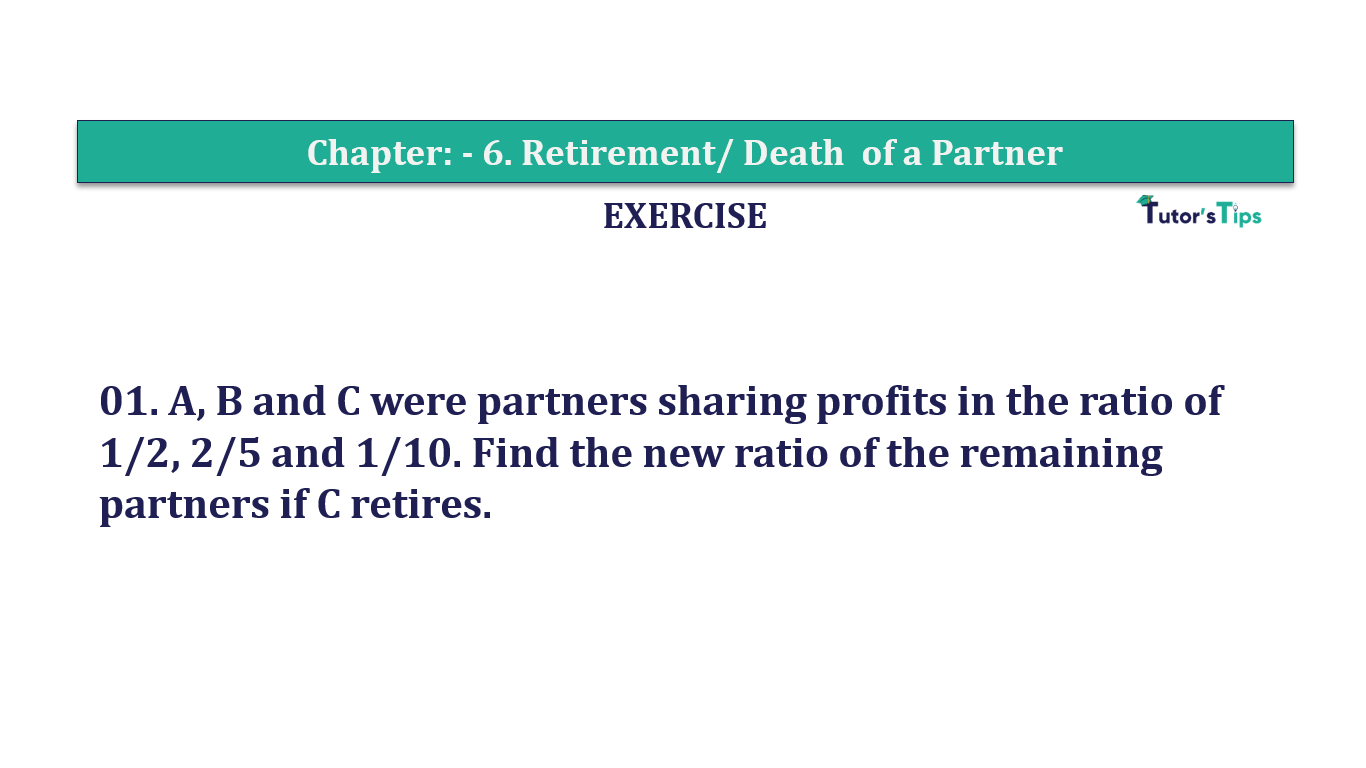Question 49 Chapter 2 of +2-A
P, Q and R are in a partnership and as at 1st April 2018 their respective capitals were: 40,000,
30,000 and 30,000. Q is entitled to a salary of 6,000 and R 4,000 p.a. payable
before the division of profits. Interest is allowed on capital @ 5% p.a. and is not charged on drawings. Of the divisible profits, P is entitled to 50% of the first 10,000, Q to 30% and R to 20%, the rest of the profit is shared equally. Profits for the year ended 31st March 2019, after debiting partners’ salaries but before charging interest on capital was 21,000 and the partners had drawn 10,000 each on account of salaries, interest and profit.
Prepare Profit and Loss Appropriation Account for the year ended 31st March, 2019 showing the distribution of profit and the Capital Accounts of the partners.
The solution of Question 49 Chapter 2 of +2-A:
| Profit and Loss Appropriation Account for the year ended 31st March 2019 |
||||||
| Expenditure |
Amount | Income |
Amount | |||
| To Interest on Capital A/c *1 | By Profit and Loss A/c | 21,000 | ||||
| P’s Capital A/c | 2,000 | |||||
| Q’s Capital A/c | 1,500 | |||||
| R’s Capital A/c | 1,500 | 5,000 | ||||
| To R’s Salary A/c | 12,000 | |||||
| To Profit Transferred to *2 | ||||||
| P’s Current A/c | 7,000 | |||||
| Q’s Current A/c | 5,000 |
|||||
| R’s Current A/c | 4,000 | 16,000 | ||||
| 21,000 | 21,000 | |||||
| Particulars |
P | Q | R | Particulars |
P | Q | R |
| To Drawing a/c | 10,000 | 10,000 | 10,000 | By Balance B/d | 40,000 | 30,000 | 30,000 |
| By Interest on Capital A/c *1 | 2,000 | 1,500 | 1,500 | ||||
| By Salaries A/c | – | 6,000 | 4,000 | ||||
| By P&L Appropriation A/c*2 | 7,000 | 5,000 | 4,000 | ||||
| To Balance c/d | 39,000 | 32,500 | 29,500 |
||||
| 49,000 | 42,500 | 39,500 |
49,000 | 42,500 | 39,500 |
Working Note: –
*1 Calculation of Interest on P’s, Q’s, & R’s Capital
Interest on Capital = Opening Capital X Rate of Interest
| Interest on P’s Capital | = | 40,000 | X | 5 |
| 100 |
Interest on P’s Capital = 2,000/-
| Interest on Q’s Capital | = | 30,000 | X | 5 |
| 100 |
Interest on Q’s Capital = 1,500/-
| Interest on R’s Capital | = | 30,000 | X | 5 |
| 100 |
Interest on R’s Capital = 1,500 /-
*2: -Calculation of share of profit of P’s, Q’s, & R’s
Net Profit after interest & Salary = 16,000
Distribution of first Rs 10,000 in the Capital Ratio i.e. 50:30:20
Advertisement-X
| Profit share of P | = | 10,000 X 50/100 |
| Profit share of P | = | 5,000/- |
| Profit share of Q |
= | 10,000 X 30/100 |
| Profit share of Q | = | 3,000/- |
| Profit share of R | = | 10,000 X 20/100 |
| Profit share of R | = | 2,000/- |
Distribution of remaining profit in the ratio of 1:1:1
Remaining Profit available for distribution = Rs 16,000 − 10,000 = Rs 6,000
| Profit share of P | = | 6,000 X 1/3 |
| Profit share of P | = | 2,000/- |
| Profit share of Q |
= | 6,000 X 1/3 |
| Profit share of Q | = | 2,000/- |
| Profit share of R | = | 6,000 X 1/3 |
| Profit share of R | = | 2,000/- |
Total Profit share of P = 5,000 + 2,000 = Rs 7,000
Total Profit share of Q = 3,000 + 2,000 = Rs 5,000
Total Profit share of R = 2,000 + 2,000 = Rs 4,000
Comment if you have any questions.
Also, Check out the solved question of previous Chapters: –
T.S. Grewal’s Double Entry Book Keeping +2 (Vol. I: Accounting for Not-for-Profit Organizations and Partnership Firms)
- Chapter No. 1 – Financial Statement of Not-For-Profit Organisations
- Chapter No. 2 – Accounting for Partnership Firms – Fundamentals
- Chapter No. 3 – Goodwill: Nature and Valuation
- Chapter No. 4 – Change in Profit-Sharing Ratio Among the Existing Partners
- Chapter No. 5 – Admission of a Partner
- Chapter No. 6 – Retirement/Death of a Partner
- Chapter No. 7 – Dissolution of a Partnership Firm
T.S. Grewal’s Double Entry Book Keeping (Vol. II: Accounting for Companies)
- Chapter No. 8 – Company Accounts – Accounting for Share Capital
- Chapter No. 9 – Company Accounts – Issue of Debentures
- Chapter No. 10 – Redemption of Debentures
T.S. Grewal’s Double Entry Book Keeping (Vol. II: Accounting for Companies)
- Chapter No. 1 – Financial Statements of a Company
- Chapter No. 2 – Financial Statement Analysis
- Chapter No. 3 – Tools of Financial Statement Analysis – Comparative Statements and Common- Size Statements
- Chapter No. 4 – Accounting Ratios
- Chapter No. 5 – Cash Flow Statement
Check out T.S. Grewal +2 Book 2020@ Official Website of Sultan Chand Publication








Leave a Reply